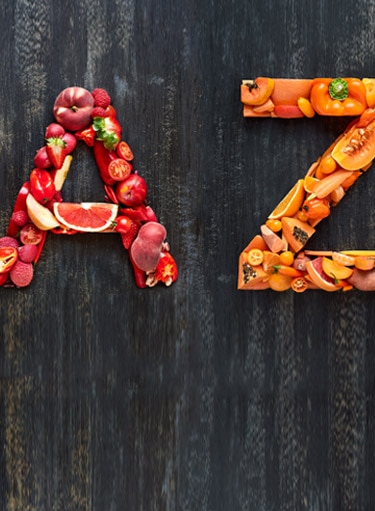- My Ramadan
- Recipes
- Nutrition And Health
-
Brands
- Aero
- COFFEE-MATE®
- CRUNCH® CEREALS
- Cocoa Puffs®
- Fitness Toasties
- illuma 3
- KLIM®
- MAGGI®
- NAN® 3
- NESCAFÉ®
- NESQUIK®
- Nestle® CERELAC®
- Nestle® Pure Life®
- NIDO® PLUS
- PROGRESS KIDS GOLD
- SMARTIES®
- COUNTRY CORN FLAKES®
- CHOCAPIC®
- COOKIE CRISP®
- HONEY CHEERIOS®
- KITKAT®
- LION® CEREAL
- NESCAFÉ® Dolce Gusto®
- NESQUIK® CEREALS
- Nestle® FITNESS®
- NESTLÉ® DESSERT SOLUTIONS
- NIDO® FORTIFIED
- PROMISE PE GOLD
- Perrier®
A-Z to Healthy Living
Nutrition Dictionary
-
Additives
As the name indicates, they are substances that are added to food to improve its appearance or to preserve its taste and quality. Additives have been used for centuries and some of them are natural such as vinegar, salt and vitamin C. Food additives are listed on the food labels in the ingredient list and can be identified by numbers.The addition of additives to foods is normally regulated by recognized agencies such as the United States Food and Drug Administration (FDA).
-
Amino Acids
Amino acids are the building blocks of protein. There are 20 different types that are combined in different ways to make different proteins. The body can make some of its own amino acids but some are essential meaning that they cannot be made by the body so we need to get them from food.
-
Aerobic exercise
Aerobic exercise, also known as cardiovascular exercise, raises the body’s demand for oxygen resulting in an increase in heart rate and respiration rate. This type of physical activity is relatively low to moderate in intensity and of long duration (more than 20 minutes), such as walking, jogging, dancing, cycling, stair climbing, swimming, and jumping rope. These types of exercises, if done regularly, improve heart function.
-
Anemia
Anemia indicates a decrease in the number of red blood cells (RBC) in the blood or less than the normal amount of haemoglobin in the RBC's. Haemoglobin transfers oxygen from the lungs to all body cells where it is used to produce energy and give the skin its healthy color. So when a deficiency exists, less oxygen is transported to body cells which will make us feel unpleasant symptoms such as tiredness, pale skin, less concentration and headaches.
-
Aspartame
Aspartame is an artificial sweetener made up of two amino acids – aspartate and phenylalanine. These amino acids are found naturally in many foods such as meat, vegetables, dairy products and cereal grains. Individually these amino acids are not sweet, but joined together they produce an intense sweet taste that is approximately 200 times sweeter than sugar.








